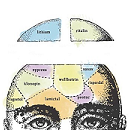A new study published in BMJ has found that antipsychotic use is associated with severe, life-threatening conditions in people with dementia. The research, led by Pearl L. H. Mok of the University of Manchester, highlights an increased risk of stroke, pneumonia, acute kidney injury, heart failure, myocardial infarction, and other serious outcomes. These risks are highest immediately after starting the medication, particularly within the first week of use.
The study found that typical antipsychotics, such as haloperidol, were linked to a higher risk of adverse effects than atypical antipsychotics, such as risperidone and quetiapine. While quetiapine was associated with a lower risk of certain conditions, including stroke and pneumonia, it was not free from harmful effects.
Despite longstanding regulatory warnings against prescribing antipsychotics for behavioral and psychological symptoms of dementia, these drugs continue to be widely used. The authors of the study caution that risks beyond mortality—including the development of acute and chronic conditions—should be carefully considered before prescribing. They write:
“In this population based cohort study of adults (≥50 years) with dementia, use of antipsychotics compared with non-use was associated with increased risks for stroke, venous thromboembolism, myocardial infarction, heart failure, fracture, pneumonia, and acute kidney injury. Increased risks were observed among current and recent users and were highest in the first week after initiation of treatment. In the 90 days after a prescription, relative hazards were highest for pneumonia, acute kidney injury, stroke, and venous thromboembolism, with increased risks ranging from 1.5-fold (for venous thromboembolism) to twofold (for pneumonia) compared with non-use.”
















It is not the individual studies that are important but the total picture that emerges, so that total picture should obviously be known by all MIA writers and the new research synthesized into the context of the total research picture in order to give the coverage it’s full significance – do you see? So you can make all such coverage instantly more impactful and important by covering the part in relation to the whole, which is the essence of wholistic rather then fragmentary intelligence. The whole picture includes the average life expectancy of people who are on chronic antipsychotics as well as the general picture of poor long-term outcomes because if you bring them together in your articulation of new findings you discover the deeper underlying unity of all these research findings for example that such medication produces far more adverse psychological and social as well as physiological markers of poor wellbeing hence you might even begin to perceive the total undoing of the complex life system we call a human being which includes consciousness and thought and feeling which science has discovered extraordinarily few material facts about except discovering correlation between thought and feeling states and neurological activity. And then of course the whole context includes what we know about the whole state of psychopharmacological research and the actual conditions of society and healthcare today. Because we need to go beyond all these superficial technocratic facts and see the stark, ugly underlying truth in order to wake up and explode into right action. The more you practice putting the parts always in relation to the whole, the better you’ll get at it, and if you understand this you’ll have the energy to do it and the results will speak for themselves. And if you manage to master the art of seeing life as a whole rather then through conceptual fragmentation, you may begin to see how without considering the greater whole picture you miss what are now embarrassingly obvious connections and obviously salient insights connecting it to greater whole. This isn’t coming out quite right because I think I have an agender, namely, to try and torment you into doing what I want you to. And the more you master the art of always considering the part in relation to the whole, which is the refinement of your right brains, and putting it into words, the more the left brain/intellect can grasp the whole picture, the more it is transformed also by these words or facts you put together and makes it comprehensible to other aspects of the human nature and helps to transform the whole human being that you are (I didn’t know I knew this but again it’s merely connecting dots that probably you have a grasp of but only come out when you consistently consider things in relation to the totality). The brain can then actually begin to explore these connections through your bringing them together in an article and it accelerates your wholistic understanding of life. I don’t know why I’m trying to push the case as if to try and convince you because you either see it or you don’t, although I may not be making myself clear. I know all that I know here from writing comments on MIA I think, because it helped me to make all the necessary connections and therefore I learn from what I say every time. Weird the things that make the brain grow in understanding of life that have NOTHING whatsoever to do with reading boring books on experts or any other bugger which is a massive liberation and a freeing of oneself from the intellectual tyranny of others and society at large. You won’t know where to take shelter in a storm if you can’t even find your own legs and stand on them without support for another, or perhaps I’m mad – you decide.
Report comment
Good study. Are there similar ones on health outcomes for non demented adults taking these drugs and also ones on children taking them?
Report comment
Worse. The Beers list (drugs harmful to elder adults – over 65) seems to read to me, that these drugs are okay if you have a schizophrenia or bipolar diagnosis.
I don’t give my informed consent to extra stroke risk! Are you guys nuts?
Report comment
I’ll try and remember to read the beer list between my shifts of drinking beer, and I usually have two such shifts a day. And if I try and delay them because i don’t like alcohol I only get more drunk.
Report comment